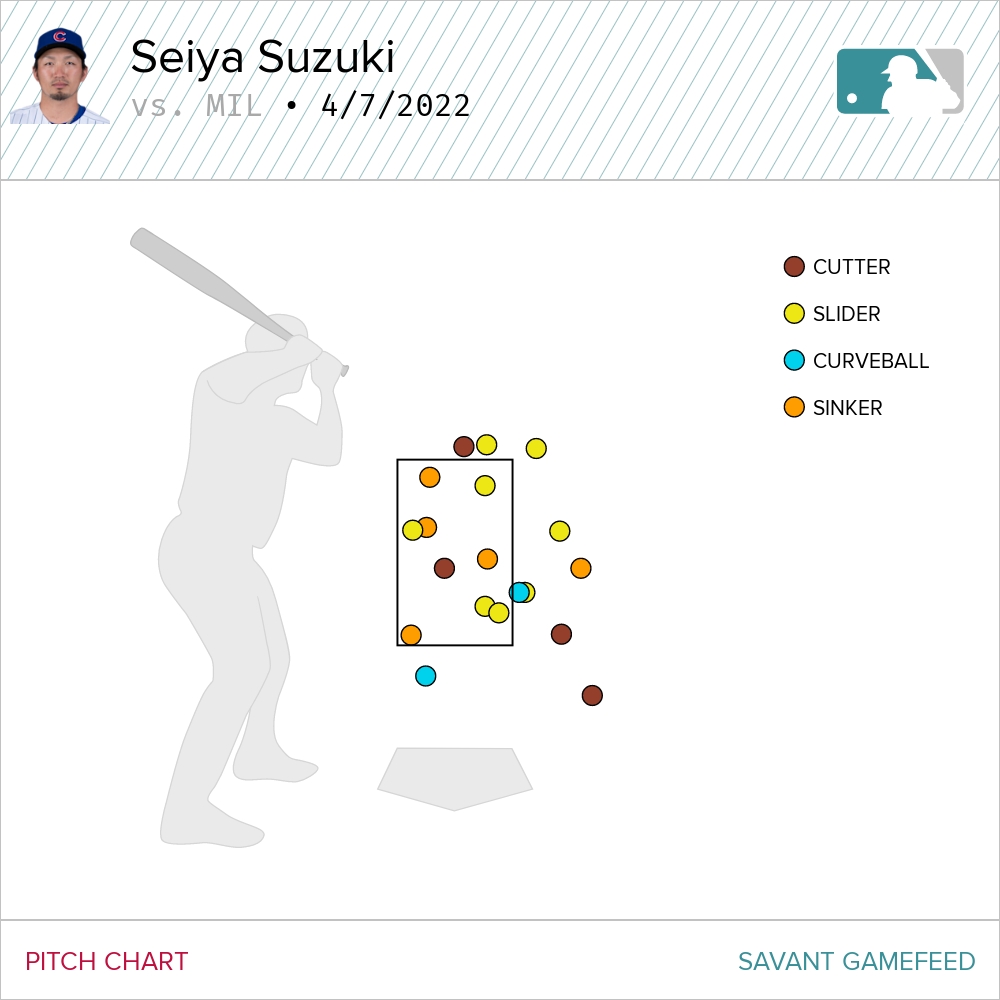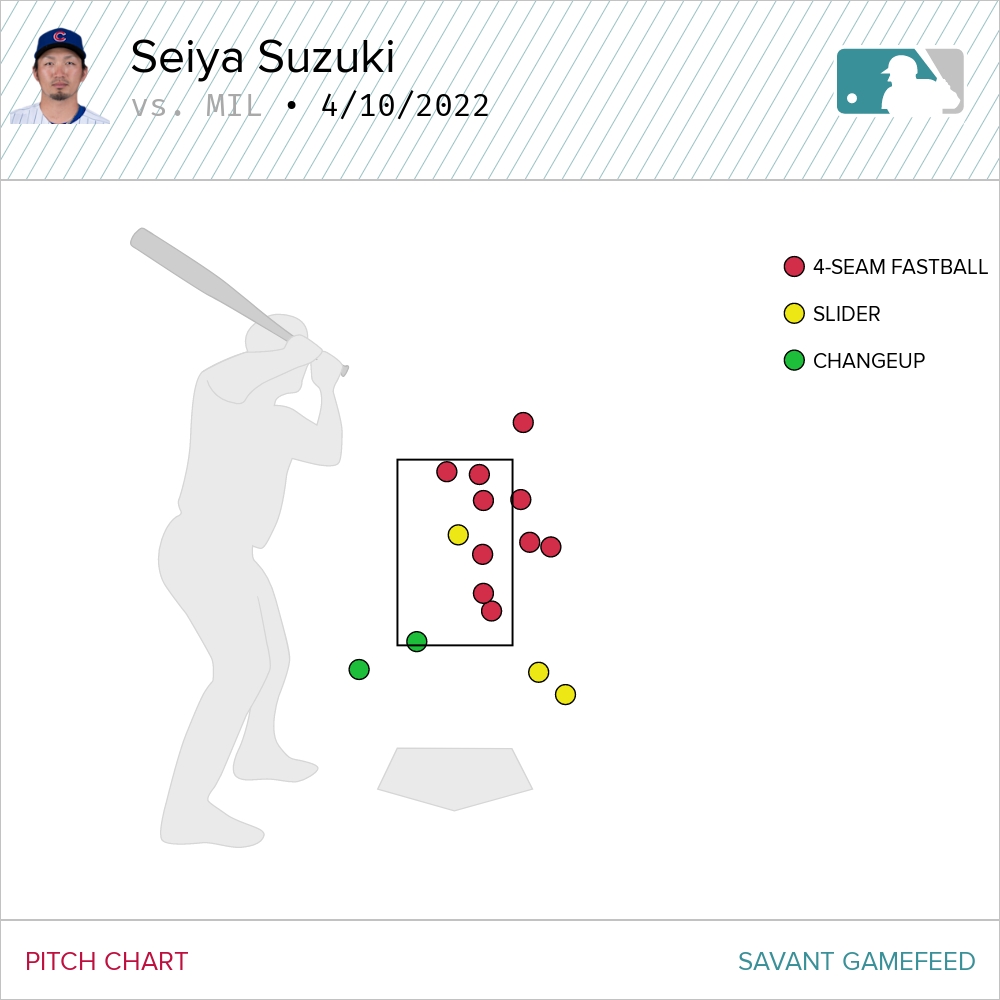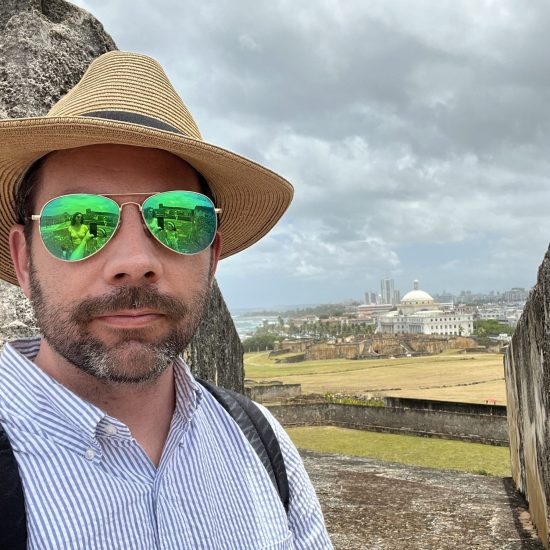Seiya Suzuki, the Cubs’ new outfielder that signed from Japan’s Hiroshima Carp, did something last Thursday that few players have been able to do in their major league debuts.
Suzuki didn’t swing at a single pitch outside the strike zone. That alone would be good for a player making his major league debut after a short spring training, but that’s not what is entirely unusual. What made it more impressive is that in addition to not swinging outside the zone, Suzuki also made contact on every single pitch at which he did swing.
There have been 1,635 players to make their major league debuts in the “Statcast era” since 2015 — only eight of them before Suzuki have debuted with at least four plate appearances in which they didn’t chase outside the zone and made contact on every pitch they swung at outside the zone — and it hasn’t happened since 2018.
Admittedly, this was a single-game, four-plate-appearance sample, and also not a predictive measure of how Suzuki will perform for his career. It is, however, impressive and encouraging if you’re Suzuki or a Cubs fan.
Suzuki, in accomplishing a feat that happens less often than a no-hitter, demonstrated possibly a better feel for the strike zone than even the home plate umpire:

Suzuki saw at least one pitch that was outside the zone down and away called a strike, and possibly another that was borderline. That down-and-away pitch, notably, is also the one he lined into left field for his only hit of the day.
That hit wasn’t exactly scorched, either, with an exit velocity of 88 miles per hour. And, there’s a line between plate discipline and passivity and Suzuki took an awful lot of called strikes during the course of the game, particularly on the inside half of the plate.
Left out of this analysis so far is the fact that Suzuki did this against one of the best pitching staffs in MLB, and faced reigning Cy Young Award winner Corbin Burnes for his first two plate appearances, in which he walked and earned his first base hit. Burnes makes his living on a hard cutter which he throws over half the time and averages 95 miles per hour on it.
In that Opening Day game, Burnes had trouble controlling the cutter early, and relied much more heavily on sliders and sinkers to Suzuki:

It was those hard pitches, the cutters (95 mph average) and sinkers (96 mph average) that were thrown in the zone that gave Suzuki the most problems as he fouled off or took every sinker and cutter he saw.
The general consensus is that balls break more sharply in Japan due to differences in the ball, but pitchers typically don’t throw as hard. That would back up the results from Suzuki’s first game in Major League Baseball, in which he demonstrated an advanced eye at the plate with Burnes’ sliders and curves, but laid off on or mistimed the higher velocity pitches.
Again, with a short spring training and a debut against a Cy Young winner, that’s not entirely unexpected. Lots of hitters have struggled with catching up to Burnes’ cutter, but lots of those hitters also haven’t been able to lay off those sliders and curves, either.
Four plate appearances can’t tell us anything about who a hitter is, and in fact Suzuki broke his whiff-less streak in his first plate appearance of his second game two days later. The fact that Seiya Suzuki joined just eight other players in a “perfect” plate discipline game in his first game in the majors is a pretty good place to start, however. He clearly recognizes the pitches and tracks them well.
Through the Cubs’ first series of games, Suzuki batted .375/.538/.750. The Brewers for their part did seem to adjust pretty quickly to Suzuki, throwing almost exclusively fastballs in the zone on Sunday:

That yellow dot in the heart of the zone? Suzuki took it out of the ballpark for a 412 foot home run that left the bat at 110 miles per hour. After that first-inning homer, the Brewers really learned their lesson and didn’t throw a non-fastball in the zone to Suzuki for the rest of the game until Devin Williams hit a changeup at the very bottom edge of the zone for a called strike in the 8th.
While Suzuki will consistently face higher velocity than he did in Japan, he already has demonstrated the skills that will make him successful if he can begin to time those pitches and square them up. Pitchers will adjust as the Brewers did, and likely throw Seiya Suzuki a steady diet of fastballs until he can show that he can time them up and do some damage on them. And in fact, Suzuki on Tuesday seemingly has already started to make the adjustment– he hit two homers off four-seamers in the zone against the Pirates– albeit against a 90.8 mph fastball, and a 92.6 heater later in the game.
If and when Suzuki can continue to catch up to heat, the underlying approach should make him a dangerous hitter and immediately prove the Cubs’ move to bring him into the organization a savvy one.
Photo by Michael Longo/Icon Sportswire | Adapted by Drew Wheeler (@drewisokay on Twitter)

